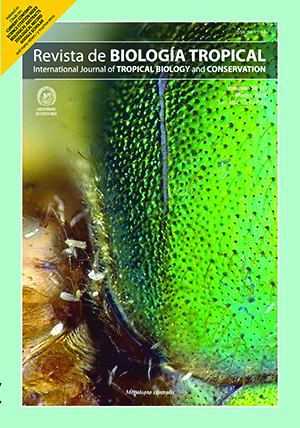Abstract
We studied the floristic composition and distribution of the riparian forest of two hydrographical systems in a subtropical Andean region. Using uni and multivariate techniques, we tested the hypotheses that a differentiable riparian forest exists, composed by native vegetation typical of the Yungas phytogeographical province, and that the distribution of vegetation varied significantly with geomorphologic characteristics. Parallel transects along the water courses were used to collect presence-absence data of vegeta-tion in eleven sites. Detrended Correspondence Analysis defined a group of common riparian species for the studied area (Solanum riparium, Phenax laevigatus, Tipuana tipu,Cestrum parqui,Carica quercifolia,Acacia macracantha, Celtis iguanaea, Juglans australis, Pisoniella arborescens, Baccharis salicifolia, Cinnamomum porphyrium and Eugenia uniflora) and identified two reference sites. The distribution of the riparian vegetation varied significantly with the geomorphic characteristics along the studied sites. Riparian habitats were composed by native and exotic species. A distinct riparian flora, different in structure and function from adjacent terrestrial vegetation, could not be identified. Riparian species were similar to the adjacent terrestrial strata. These species would not be limited by the proximity to the river. Anthropogenic impacts were important factors regulating the introduction and increase of exotic vegetation. The lack of regulation of some activities in the zone could cause serious problems in the integrity of this ecosystem.
Comments

This work is licensed under a Creative Commons Attribution 4.0 International License.
Copyright (c) 2010 Revista de Biología Tropical






